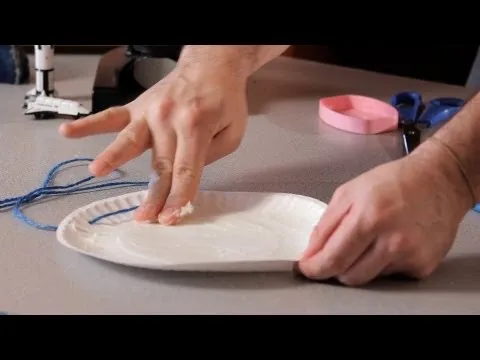
Like these Kid's Activities !!! Check out the official app http://apple.co/1ThDIrx
Watch more How to Do Small Science Projects for Children videos: http://www.howcast.com/videos/510867-How-to-Make-a-Pollution-Catcher-Science-Projects
During the summer time your parents probably put on air conditioners. And if you ever noticed, sometimes they have to clean the filters inside the air conditioners. And when you take out the filter you're going to notice something I think is pretty startling. The filter is beyond dirty. Where did the dirt come from? If the air conditioner is just sucking in air from the outside, does that mean that the air outside that we're breathing is filled with all that pollution?
You see, little tiny particles that are floating through the air are called pollutants. And the fact of the matter is, pollution's bad. We do not want it in the water. We do not want it in the land. And boys and girls, we do not want it in the air.
And I actually came up with a really cool experiment. And it's a little way for you to test to see how dirty your air is in your environment. Ad it doesn't matter where you live you can make these pollution catchers anywhere. And we're actually going to help 1, clean the air and 2, see how dirty the air is in your environment. And look, a plate, all I need. And yarn.
Step one is get a hole punch. You don't have a hole punch, get a pencil. And you're just going to make two holes. One and two. So now I made two holes. Because I'm going to want to hang this pollution catcher. Maybe on a tree. Maybe in your backyard. Maybe out your window with Mommy and Daddy's help. Put your yarn through or your string. You don't have yarn or string, could be a shoe lace. The point of these science experiments is you can make these at home with anything you have and then, make a tie, make a knot. This pollution catcher is almost done. Now I'm going to hang it somewhere.
Now what I'm going to do is, on this side where I'm going to put the letter, no, you know what I'm going to do? I'm going to draw some water. You know what else I'm going to do? I'm going to draw a picture of, I'll show you. I'm not a good artist but, a fish. You see, when people outside look at this I kind of want to tell them what I'm doing. So I'm going to draw a beautiful scene of the earth. Clean earth. Not a polluted earth. And on this side, I do nothing but add something to help me catch the pollutants that are polluting our air. I'm going to add petroleum jelly but you probably know it as Vaseline. We use it for our lips, we use it for our skin. I'm using it to help my air pollution catcher.
So I'm going to take just a couple fingers and I'm going to take a bunch of this petroleum jelly. Smells good. I'm going to put it on the part of the plate that doesn't have my design and I'm just going to start to smear it all around the plate. I want the entire plate, every inch of this plate to be covered in this petroleum jelly. And the cool part of this petroleum jelly is, this plates can stay outside for a month and they will remain sticky.
And now, believe it or not, my pollution catcher is done. Clean your hands. Take your pollution catcher, and the next step is figure out where you want to catch your pollution. Tree. Outside. In a park. Out your window. Maybe you want to hang it on your dinosaur tail. It's up to you. Leave it there. Come back two weeks later, come back one month later. And then you take it off and you're going to look. And you know what you're going to notice? Little black pollutants. And every one you caught came out of the air. And you guys helped clean our air.
Pollution is not cool. Go become an ecologist and go protect your earth. See you soon.